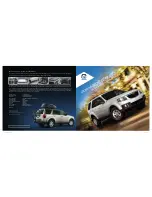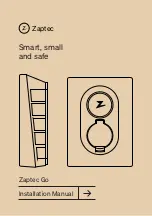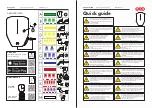
SERVICING AND MAINTENANCE
377
(Continued)
Fluid Level Check — Brake Master Cylinder
The fluid level of the master cylinder should be
checked whenever the vehicle is serviced, or
immediately if the brake system warning light is
on. If necessary, add fluid to bring level within
the designated marks on the side of the
reservoir of the brake master cylinder. Be sure
to clean the top of the master cylinder area
before removing cap. With disc brakes, fluid
level can be expected to fall as the brake pads
wear. Brake fluid level should be checked when
pads are replaced. If the brake fluid is
abnormally low, check the system for leaks.
For further information
Ú
page 426.
F
RONT
/R
EAR
A
XLE
F
LUID
For normal service, periodic fluid level checks
are not required. When the vehicle is serviced
for other reasons the exterior surfaces of the
axle assembly should be inspected. If gear oil
leakage is suspected inspect the fluid level
Ú
page 426.
Fluid Level Check
Lubricant should be approximately 1/8 inch
(3 mm) below the bottom edge of the oil fill hole.
NOTE:
Make sure that the vehicle is level and
supported by the axles.
WARNING!
Riding the brakes can lead to brake failure
and possibly a collision. Driving with your foot
resting or riding on the brake pedal can result
in abnormally high brake temperatures,
excessive lining wear, and possible brake
damage. You would not have your full braking
capacity in an emergency.
WARNING!
Use only the manufacturer recommended
brake fluid
Ú
page 426. Using the wrong
type of brake fluid can severely damage your
brake system and/or impair its performance.
The proper type of brake fluid for your vehicle
is also identified on the original factory
installed hydraulic master cylinder reservoir.
To avoid contamination from foreign matter
or moisture, use only new brake fluid or fluid
that has been in a tightly closed container.
Keep the master cylinder reservoir cap
secured at all times. Brake fluid in a open
container absorbs moisture from the air
resulting in a lower boiling point. This may
cause it to boil unexpectedly during hard or
prolonged braking, resulting in sudden brake
failure. This could result in a collision.
Overfilling the brake fluid reservoir can
result in spilling brake fluid on hot engine
parts, causing the brake fluid to catch fire.
Brake fluid can also damage painted and
vinyl surfaces, care should be taken to
avoid its contact with these surfaces.
Do not allow petroleum-based fluid to
contaminate the brake fluid. Brake seal
components could be damaged, causing
partial or complete brake failure. This could
result in a collision.
WARNING!
8
21_JL_OM_EN_EU_t.book Page 377
Содержание WRANGLER 2020
Страница 1: ...OWNER S MANUAL WRANGLER...
Страница 2: ......
Страница 110: ...108 GETTING TO KNOW YOUR INSTRUMENT PANEL INSTRUMENT CLUSTER Base Instrument Cluster 21_JL_OM_EN_EU_t book Page 108...
Страница 111: ...GETTING TO KNOW YOUR INSTRUMENT PANEL 109 Premium Instrument Cluster 3 21_JL_OM_EN_EU_t book Page 109...
Страница 112: ...110 GETTING TO KNOW YOUR INSTRUMENT PANEL Diesel Base Instrument Cluster 21_JL_OM_EN_EU_t book Page 110...
Страница 113: ...GETTING TO KNOW YOUR INSTRUMENT PANEL 111 Diesel Premium Instrument Cluster 3 21_JL_OM_EN_EU_t book Page 111...
Страница 310: ...308 SAFETY WARNING 21_JL_OM_EN_EU_t book Page 308...
Страница 337: ...IN CASE OF EMERGENCY 335 German Translation 7 21_JL_OM_EN_EU_t book Page 335...
Страница 456: ......
Страница 457: ......
Страница 458: ......
Страница 459: ......
Страница 461: ...HYBRID SUPPLEMENT WRANGLER...
Страница 462: ......
Страница 494: ...32 GETTING TO KNOW YOUR INSTRUMENT PANEL INSTRUMENT CLUSTER Instrument Cluster 21_JL_H_SU_EN_EU_t book Page 32...
Страница 546: ......
Страница 547: ......
















































